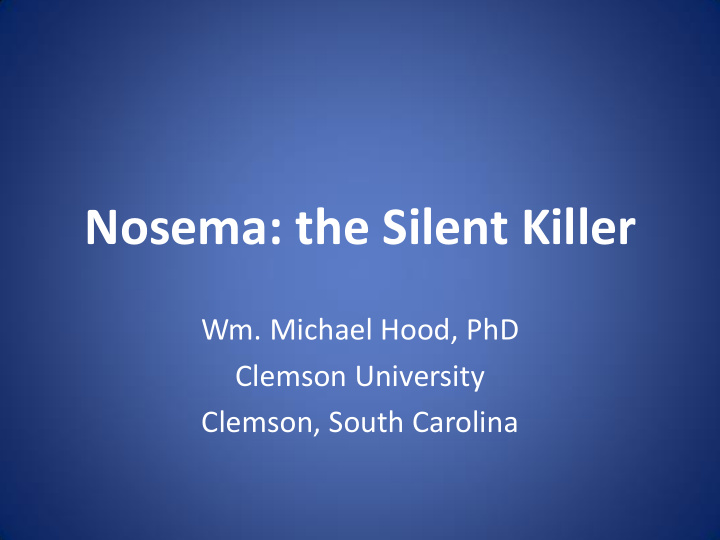



Nosema: the Silent Killer Wm. Michael Hood, PhD Clemson University Clemson, South Carolina
Nosema sp. • Nosema Disease – parasitic disease of adult bees caused by microsporidian Nosema apis or Nosema ceranae which in advanced living conditions forms long living spores which live in the mid-gut of the honey bee. • Results in reduced yield of honey and other bee products and poor quality and reduced yields in agriculture.
“Continued” • Honey bees afflicted with nosema start to forage earlier, which pathological changes of their mid-gut epithelial cells , as well as digestive and metabolic disorders, cause malnutrition leading to premature death. • Nosema is a significant disease, which often escapes the notice of beekeepers. • Nosema has been given the name “the Silent Killer” of honey bees.
Nosema disease life cycle in the bee hive Spores consumed by comb-cleaning bees Spores Spores shed infect in feces on ventriculus comb Nosema multiplies inside ventriculus cells
Nosema sp . spores seen only with a microscope
Nosema sp .
Suspect Nosema disease when : • Large number of dead adult bees are present on the bottom board in winter. • Sick, crawling bees on the ground in front of hive • Weakening of the bee colony • Loss of queen • Bee feces marks the frames and entrance to hive.
Common Sources of Nosema Infection • unsanitary water supply • honey-comb marked with feces of infected bees • contaminated honey
Factors favoring the spread of Nosema • Use of old comb • Robbing • Bad beekeeping practices • Sudden temperature fluctuations • Poor pasturage • Disturbance • Frequent colony movement
Reduce the incidence of Nosema: • Frequent comb replacement • Feeding pollen substitutes and supplements high in protein • Hive placement to encourage flight • Fumigation of stored combs with ethylene oxide, heat, or irradiating hive equipment • As a last resort, feed bees an antibiotic fumagillin
Questions ?
Recommend
More recommend